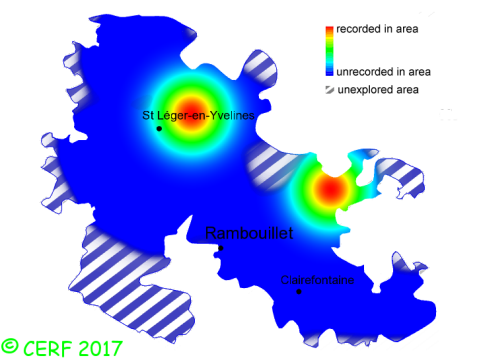New classification: Basidiomycota/Agaricomycotina/Agaricomycetes/Incertae sedis/Russulales/Russulaceae
Former classification: Basidiomycota/Homobasidiomycetes/Agaricomycetideae/Russulales/Russulaceae
edibility : unknown edibility
|
|
|
The cap is greenish-yellow to olive green; its margin is thin, smooth, not furrowed.
The cap surface is smooth, not viscid nor sticky.
The stem is white to ochre yellowish, without ring.
The flesh is white, unchanging or turning slowly brown when exposed to air; its taste is mild;
its texture is grainy (breaking like a chalk stick).
The gills are pale yolk yellow then ochre, adnate, crowded .
The spore print is whitish. This species is mycorrhizal.
It grows on the ground, in broad-leaved and coniferous woods, on a rather acid soil, with oak, beech, birch.
The fruiting period takes place from July to November.
| Dimensions: | width of cap approximately 6 cm (between 3 and 10 cm) |
| | height of stem approximately 5 cm (between 4 and 6 cm) |
| | thickness of stem (at largest section) approximately 20 mm (between 15 and 20 mm) |
Distinctive features : green colour; odour of herrings or cooked crabs
Russula elaeodes is rare and localised in the forest of Rambouillet, and is quite rare, more generally speaking
.
|  | | Above : distribution map of Russula elaeodes in the forest of Rambouillet |
|
page updated on 14/01/18
